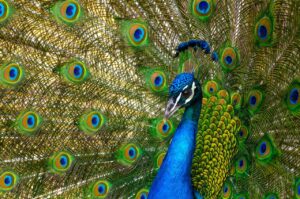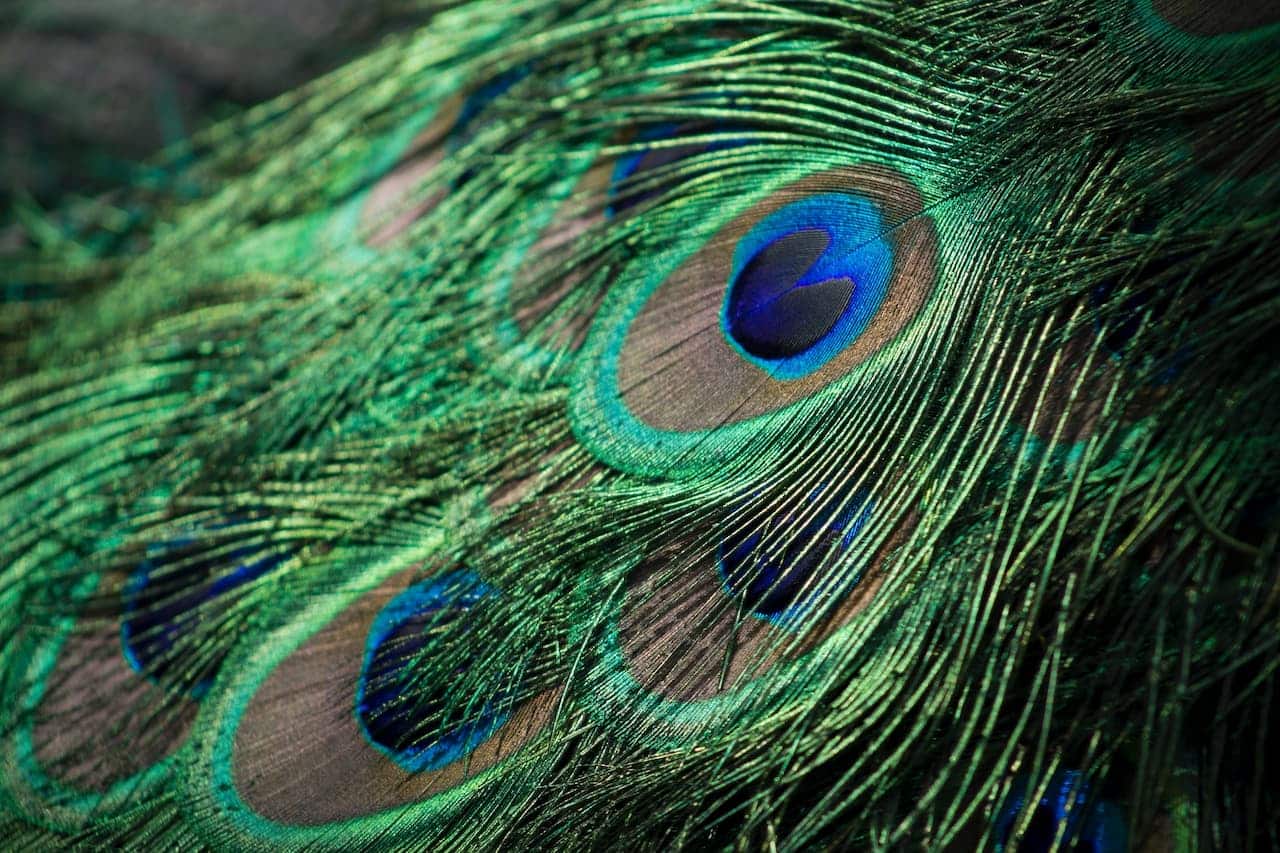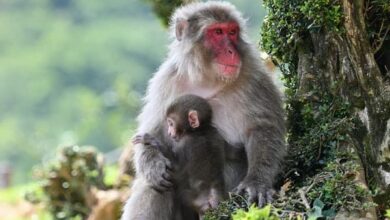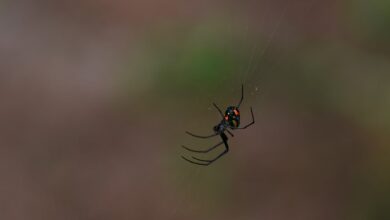Peacocks are stunning birds. Their incredible length of tail and vivid plumage further adds to their allure. The peacock also has a unique eye design.
The word “peacock” can be used to describe either male or female birds. For the record, peafowl is the collective noun for male and female peacocks and peahens.
The peahen’s crest acts as a sensory organ that aids in assessing the male peacock’s physical attributes. The peacock is capable of both fighting and eating cobras.
11 Interesting Facts About Peacocks
The following are the 11 must-know interesting facts about peacocks:
Peacock is a male bird
All male peacocks are the ones you see in pictures and hear about in stories. Peahens, the females of the species, are attracted to the males’ regal plumage since they are smaller and browner and whiter in coloration, but still have green necks and a beautiful head crest.
Baby peafowl, known as peachicks, are the result of this pairing. Peacocks engage in lifelong polygamy, mating with numerous mates (two to five).
It takes a peafowl around three years to grow its elaborate tail display, but once it’s done, look out! The male peacock is now actively courting females by dancing, preening, and shaking in an attempt to attract them.
The largest birds that can fly
The peacock can soar in the air despite its heft and lengthy train. However, their range is somewhat limited. Peacocks frequently use flight as a means of evading predators or traveling to their nighttime roost.
Peacocks are terrestrial birds, thus they choose to run rather than fly. It’s worth noting that peacocks, like many other birds, can sprint at a pace of up to 16 kilometers per hour (or 10 miles per hour).
These birds may weigh anything from eight to thirteen pounds, and they measure about five feet in length, from beak to tail. The peacock’s tail alone accounts for sixty percent of its whole length.
One of the most fascinating things about peacocks is that they are one of the fastest flying birds.
Peacocks are omnivorous
All parts of a plant and animal are fair game for a peacock. They consume such things as fruits, nuts, flowers, plants, insects, spiders, butterflies, and the like. Peacocks, which spend much of their time on the ground, eat mostly grains.
Peacocks eat plants rather than insects. Peacocks will also eat snakes, lizards, and other reptiles in addition to their normal diet of fish and insects.
In addition to being beautiful, peacocks are also infamous for their penchant for stalking and killing snakes. The peacock is known to combat and kill snakes, even the more dangerous cobra.
Medieval peacocks were a delicacy
Exotic animals were a status symbol for the affluent in the Middle Ages, thus they were served at their dinner parties. They didn’t eat like the common folk.
This challenging recipe from the medieval period details the preparation of peacocks for a festive meal. After the bird was roasted and seasoned, the skin was detached while the plumage was still intact so that it could be reattached for an interesting visual presentation.
The English and Australian Cookery Book claims that a peacock deserves nothing but the finest cuisine. This was an honor reserved for only the most stunning women during the days of chivalry.
While uplifting music played in the background, she proudly brought it to the head of the table to present to the ruler of the house.
While beautiful, peacocks don’t have the same flavor as chicken. Many consumers, according to the data, considered them to be harsh and bland.
Peacocks are friendly
Since peacocks are such sociable birds, they like spending time with their human companions.
Most domesticated species have a high level of human-animal interaction. In addition, peacocks enjoy playing a variety of activities with one another, including chasing and diving.
Peacocks will only travel in groups of eight to ten other birds; they will not travel alone. They like to congregate with those of their type and will not tolerate strangers. Peacocks are unexpected in that they are gregarious animals with an aptitude for intelligence.
Albinos aren’t all-white peacocks
Due to the fact that selective breeding may now produce the trait, snow-white peacocks are more frequent than they ever were. In contrast to albinism, which often causes a loss of pigmentation in both the eyes and the feathers, the genetic disease that causes leucism in peacocks only affects the feathers.
A peacock is India’s national bird
The blue peacock, often known as an Indian peacock, was officially recognized as India’s national bird in 1963. Peacocks are a wild animal in India.
The International Union for the Conservation of Nature classifies it as a species of “Least Concern,” and its range encompasses nearly the whole Indiana subcontinent. There is a long and illustrious history of Indian and Hindu religious art that features depictions of deities, goddesses, kings, and queens.
Peacock has cultural values
The Christian faith sees the peacock as a symbol of immortality. Some deity is linked to the peacock in Greek mythology. A peacock is a sign of protection in Babylonian culture.
Cultural significance is one of the fascinating aspects of peacocks. The peacock has great significance in Indian culture.
The peacock is revered as a holy bird in Hinduism because of its association with Goddess Saraswati. The Bengal tiger, likewise, carries with it significant cultural values that shift from tradition to tradition.
The tail’s symmetrical pattern of spherical dots represents the divine gaze. It also represents wisdom, goodwill, and sympathy. The white peacock, it is said, carries the promise of never-ending joy.
A peacock’s crest senses mating
The female peacock’s crest contains specialized sensors that enable it to pick up on the vibrations of a distant partner. According to The Atlantic, a peacock’s tail twitches at the same frequency as the feathers on his body as he performs.
Male peacocks attract female attention by fanning out their tails, at which point the female rattles the feathers at a pace of 26 times per second, causing a shock wave that shakes the male’s head.
10-20 Years is the average lifespan
Peacocks are a crucial element of any zoo’s collection since they are so widely tamed. Wild peacocks often live between 15 and 20 years.
If cared for properly, a captive peacock can live for 40 to 50 years. Predators like as tigers, raccoons, wolves, dogs, etc., are one of the primary causes of a shortened lifetime in the wild.
Peacocks can fake it
Recent studies have shown that peacocks are smart in addition to being stunning.
When mating, male and female peacocks make a loud coaxing noise. Incredibly, the research found that the birds could imitate this sound to attract additional females.
To show the female they are more sexually active and genetically healthy than their rivals, male birds will act as though they are mating even when they are not.
Conclusion
Peacocks are one of the most striking and unique animals, admired by people of all ages for their enormous tails, colorful plumage, and intricate body patterns.
Peafowl is notable for its brilliant tail feathers, but that is not all they have to show. In conclusion, some of the many interesting traits of peacocks include their capacity to fly and their strength in battle against deadly snakes. Peacocks are beautiful creatures with brilliantly colored feathers and bodies.






